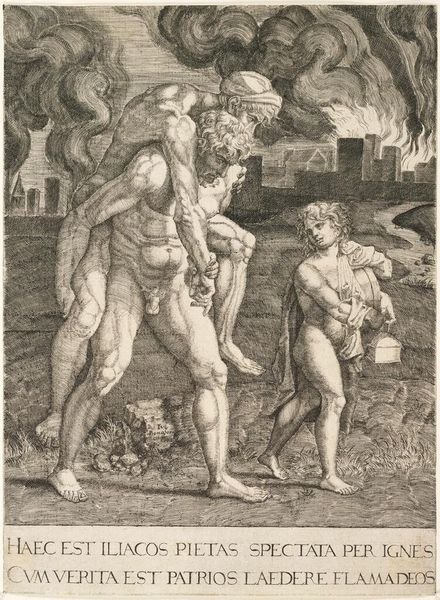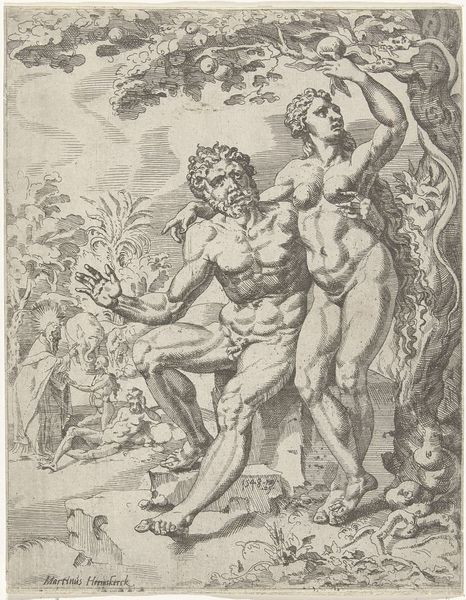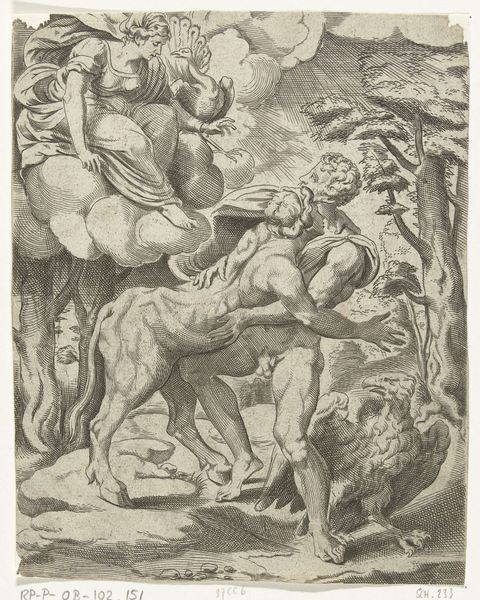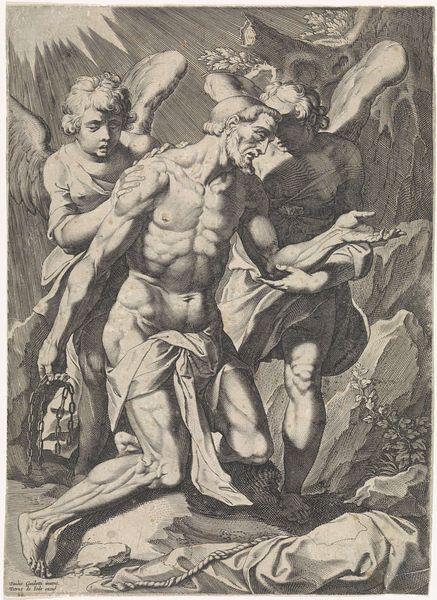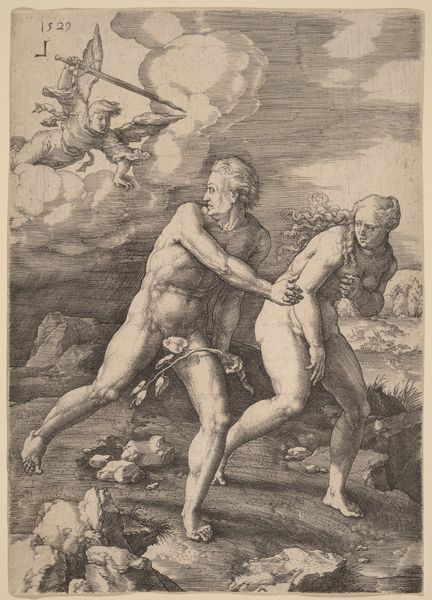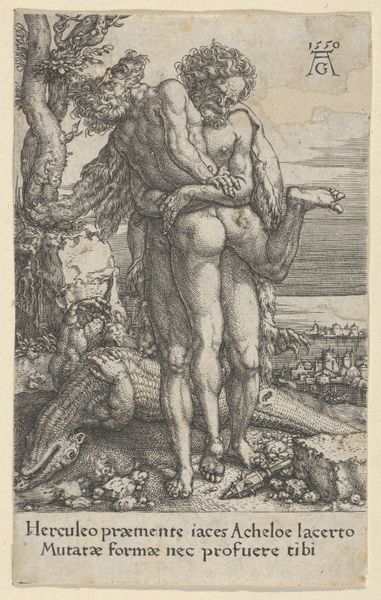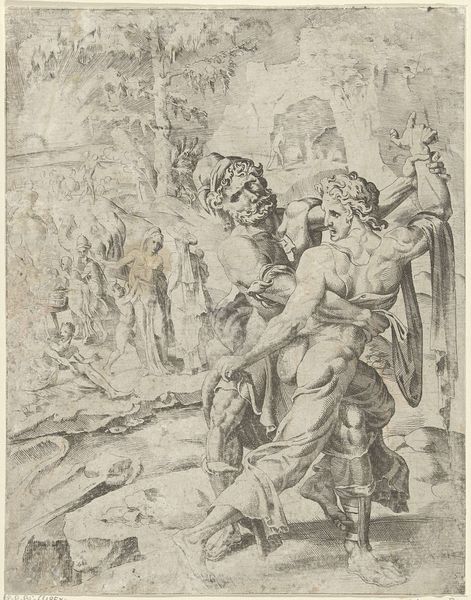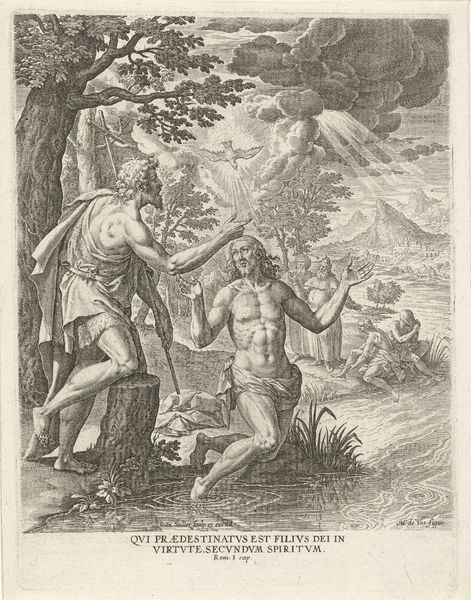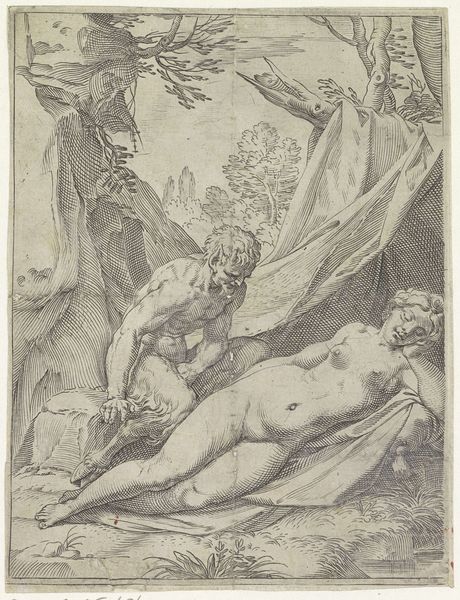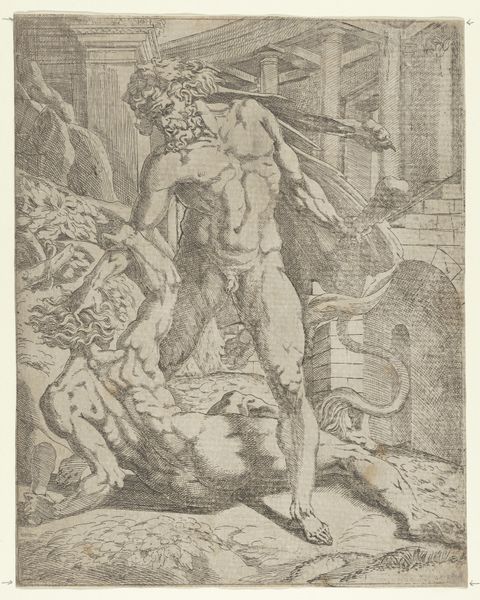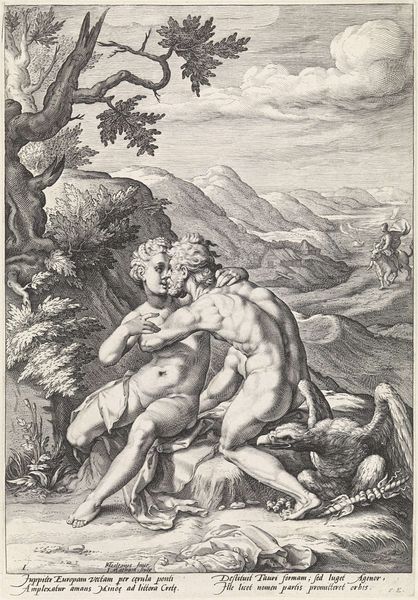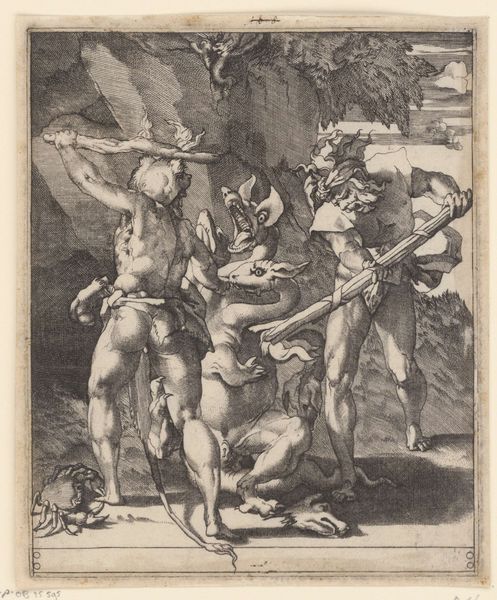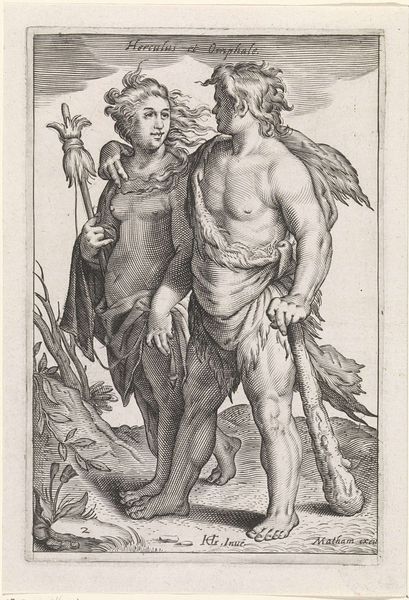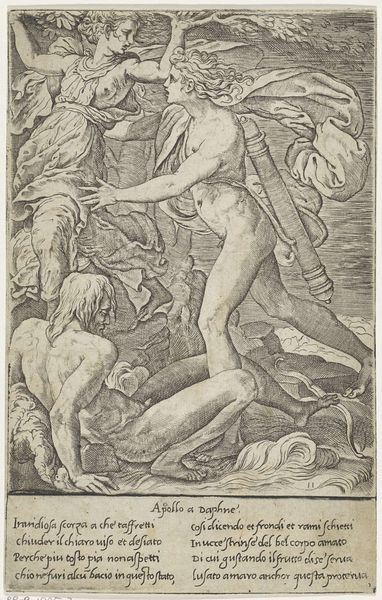
print, engraving
# print
#
old engraving style
#
landscape
#
figuration
#
11_renaissance
#
history-painting
#
engraving
Dimensions: height 230 mm, width 167 mm
Copyright: Rijks Museum: Open Domain
Curator: This engraving, made sometime between 1515 and 1565 by an anonymous artist, depicts Aeneas fleeing Troy with his family. Editor: It's strikingly dramatic! The smoky sky looms ominously behind them, setting a deeply anxious tone. You can feel the urgency and sorrow. Curator: Indeed. Notice the heroic figure of Aeneas, carrying his father, Anchises, on his back, while his son, Ascanius, walks beside him carrying household gods. This image taps into powerful ideas about duty, lineage, and the weight of history. The "pietas," or piety, it represents became a symbolic representation of the Roman Empire's values. Editor: The figures are idealized, but the means of production – the engraving itself – tells a more grounded story. It's a painstaking, laborious process of etching lines onto a metal plate, building up this intricate image one mark at a time. What was the function of the engraving here, do you think? Curator: Prints like this allowed for wide circulation of classical stories and moral exemplars during the Renaissance. They played a key role in shaping a shared visual vocabulary around virtues and leadership, connecting present with the past. Consider the significance of each figure— the aging father representing the past and legacy being physically carried to the future. Editor: Right, and by being reproduced as an engraving, it would have reached diverse workshops and domestic spaces—a functional item meant for instruction and conversation, perhaps? Far from our notions of "high art," or precious and inaccessible objects in a museum context. Curator: Precisely. Even the burning city behind them is important, symbolizing the catastrophic loss but also the founding narrative of a new lineage. It underscores that renewal springs forth from ruin. Editor: The lines create dramatic chiaroscuro and texture despite being so rigid; it gives the forms volume and helps build that overall sense of looming catastrophe as Troy burns behind them, juxtaposed with this family’s resilient hope. A remarkable testimony about art as a kind of visual memory device, perhaps. Curator: It allows for reflecting on timeless human themes, that certainly transcends beyond a specific historical moment and allows for thinking of memory, identity, and duty. Editor: Thanks, this examination shifted my perspective in subtle, intriguing ways! Curator: Likewise. The image definitely still inspires interesting interpretations across eras.
Comments
No comments
Be the first to comment and join the conversation on the ultimate creative platform.
